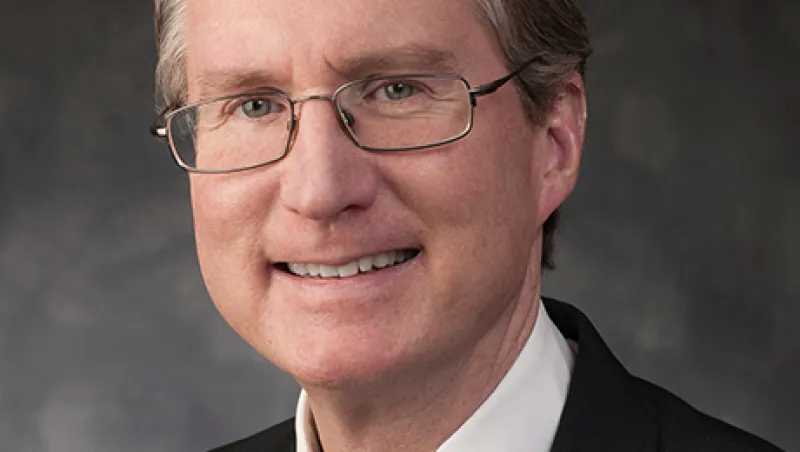Old Mutual Asset Management has taken a long journey. In 2000, South African life insurer Old Mutual bought and renamed United Asset Management, the then-struggling firm founded by Norton Reamer. UAM had acquired more than 40 specialist managers, left them independent in return for a share of revenue, and centralized functions like sales and marketing. Reamer had created the multiboutique model in 1980 to capitalize on the burgeoning institutional asset management business; initially his company thrived, but, heavy with value managers, it faced pressure in the late 1990s as growth and technology stocks soared and distribution costs rose.
Now, with Boston-based OMAM having gone through a top-to-bottom restructuring, CEO Peter Bain is thinking about acquisitions and a long-planned initial public offering. In late February parent company Old Mutual announced that it would take a minority interest of its U.S. asset management business public this year. Affiliates of OMAM, which managed $257 billion in assets as of last December, include Boston-based Acadian Asset Management, a global equity investor; real estate investor Heitman in Chicago; and Barrow, Hanley, Mewhinney & Strauss, a Dallas-based value manager. For 2013, profits grew 21 percent over the previous year, to $174 million.
Bain, who joined OMAM as CEO three years ago and spoke with Institutional Investor in early February, says he wanted the job because Old Mutual was reinventing the multiboutique model in a way that he thought addressed its weaknesses. Fully owning the asset managers and taking a piece of revenue left little incentive for portfolio managers to partner with the parent company and create sustainable growth. Bain had previously spent a decade at Legg Mason, where his roles included head of affiliate management; he worked with Raymond “Chip” Mason as the Baltimore-based firm’s founder acquired specialist managers such as Brandywine Asset Management and Royce & Associates and put together his own version of the multiboutique. Legg Mason itself ran into trouble, beginning in the financial crisis when high-profile managers like value guru Bill Miller and fixed-income firm Western Asset Management faltered.
Activist investor Nelson Peltz, who started buying shares of Legg Mason in 2009, now owns 10 percent of the firm and has a seat on its board. Peltz, a founding partner of New York–based Trian Fund Management, backed the hiring of new CEO Joseph Sullivan in February 2013 to turn ailing Legg Mason around. Sullivan has since said he plans to restructure the firm’s deals with affiliates over the next 18 months by giving them equity. However, holding companies have prospered during the same time period; as of February 14, Beverly, Massachusetts–based Affiliated Managers Group’s stock price was up 275 percent since January 2010, to $190.58.
Multiboutique 2.0, as Bain calls it, is about finding and retaining talented managers. “That’s the big challenge,” he says. Motivating managers means giving them equity in their firms, and the holding company needs to share profits, not revenue as UAM did. (Publicly traded AMG and others also have revenue-sharing arrangements.) That way Old Mutual helps shoulder expansion and development expenses with its affiliates. “We’re absorbing costs together,” says Bain, 55. “Then we’re really partners and we can determine what the costs and potential returns will be.”
Big institutional investors believe the structure of their money managers matters when it comes to performance. Publicly traded firms must please shareholders with their stocks and investors with their products. Privately held managers have the luxury of looking beyond short-term profitability, but they lack access to outside capital. Meanwhile, institutions like boutiques’ singular focus but worry about the long-term health of undiversified businesses. A multiboutique can address those concerns by putting a well-funded parent in the middle. “We’ve learned that [holding companies] owning less than 100 percent of the asset managers is a good idea,” says Robert Pozen, former vice chairman of Fidelity Investments and chairman emeritus of Boston-based MFS Investment Management. “If you didn’t leave the managers with equity, it didn’t seem to work.” Multiboutiques are dedicated asset managers, he adds, even though they have more complicated structures than firms like Baltimore-based T. Rowe Price Group.
Pozen co-authored a 2011 paper called “Most Likely to Succeed: Leadership in the Fund Industry” that appeared in the Financial Analysts Journal. “We believe that the most successful managers over the next decade will be organizations with two characteristics: dedication primarily to asset management and control by investment professionals,” it states.
Multiboutiques account for much of the asset management industry’s assets, though firms define the concept very differently, says Kevin Quirk, a partner at Darien, Connecticut–based investment management consulting firm Casey Quirk. In Quirk’s view, Bank of New York Mellon Corp., Principal Global Investors and Prudential Financial are multiboutiques. The model grew up as an alternative to big asset management acquisitions, which were difficult to get right and often ended in failure, he explains. Quirk, who declined to comment on specific firms, says the challenge for multiboutiques is to align the economic interests of affiliates and holding companies while providing the correct level of centralized services. For example, he notes, distribution can be particularly tough for several reasons, including the demands of building a sales force that can successfully represent multiple managers and styles.
When Bain arrived at OMAM, it had whittled down its affiliates to 18; all had minority ownership in their firms and a profit-sharing structure. Former CEO Scott Powers, who joined a year after Old Mutual’s acquisition of UAM and left for Boston-based State Street Corp. in 2008, had done much of the work. Powers sold 27 managers, bought three and invested heavily in retail mutual funds, thinking the firm was too reliant on its institutional business. Powers was replaced by Thomas Turpin, who departed soon after Old Mutual announced in 2010 that it would do a partial IPO of the asset management arm.
But Bain believes the multiboutique model is better suited to institutional investors, who prefer hiring specialists from a wide variety of firms. His strategy involved building non-U.S. distribution services, advising on management and succession issues, and expanding affiliates; the latter included seeding new products and providing co-investment capital for OMAM’s alternative-investment outfits. Bain also assembled a four-person executive team. He hired Stephen Belgrad, who had been in new investments at AMG, as CFO, and Aidan Riordan as head of affiliate management from Baltimore-based private equity firm Calvert Street Capital Partners. Bain put Christopher Hadley, who’s been with OMAM since 2006, in charge of human resources and made Linda Gibson, who previously led affiliate management, head of global distribution.
More restructuring followed. OMAM sold ten more affiliates that didn’t fit with its new strategy, a move that included exiting retail. Dwight Asset Management, the Burlington, Vermont–based stable-value manager that accounted for a big chunk of the firm’s assets, was acquired by Goldman Sachs Group; although Dwight offers a fixed-income alternative to money market funds, stable value falls outside OMAM’s focus on active management. OMAM sold Old Mutual Capital, the adviser to its mutual funds, to Cincinnati-based Touchstone Investments. It also sold Analytic Investors, Ashfield Capital Partners and Larch Lane Advisors back to their senior management teams in January 2013.
Now, despite a challenging market, Bain says he’s considering acquisitions in growth equity, alternative credit and private equity. He may even get back into retail. But after selling ten firms, Bain doesn’t want a turnaround situation, and he’s willing to pony up for peace of mind: “I’d rather pay a high multiple for a business that will grow than a low multiple for a mediocre-performing business.” • •







